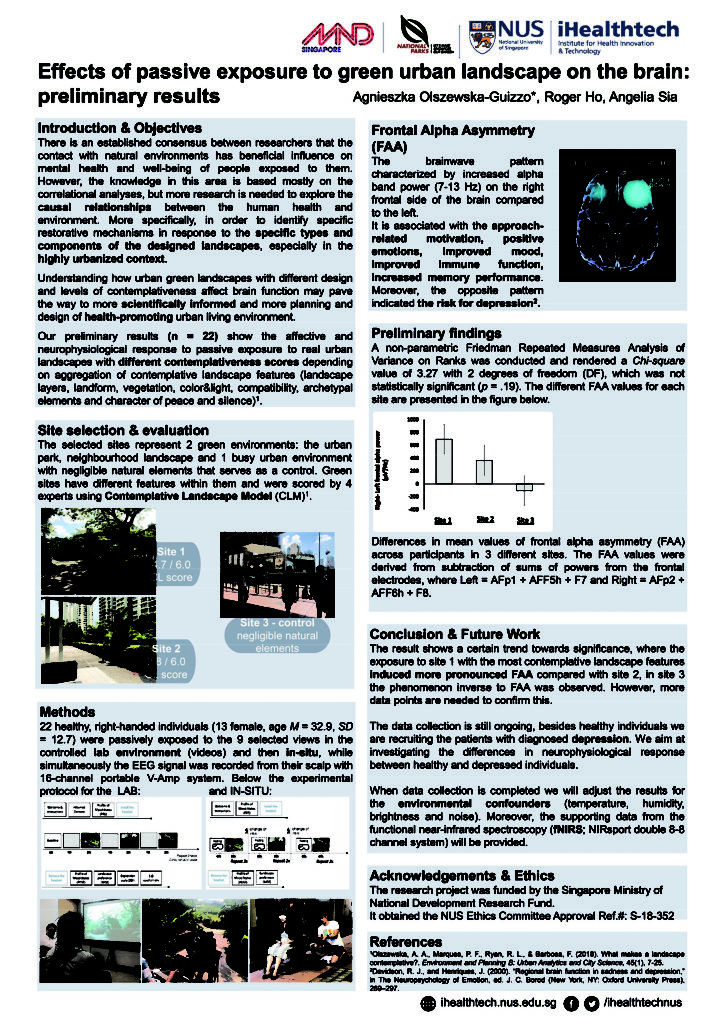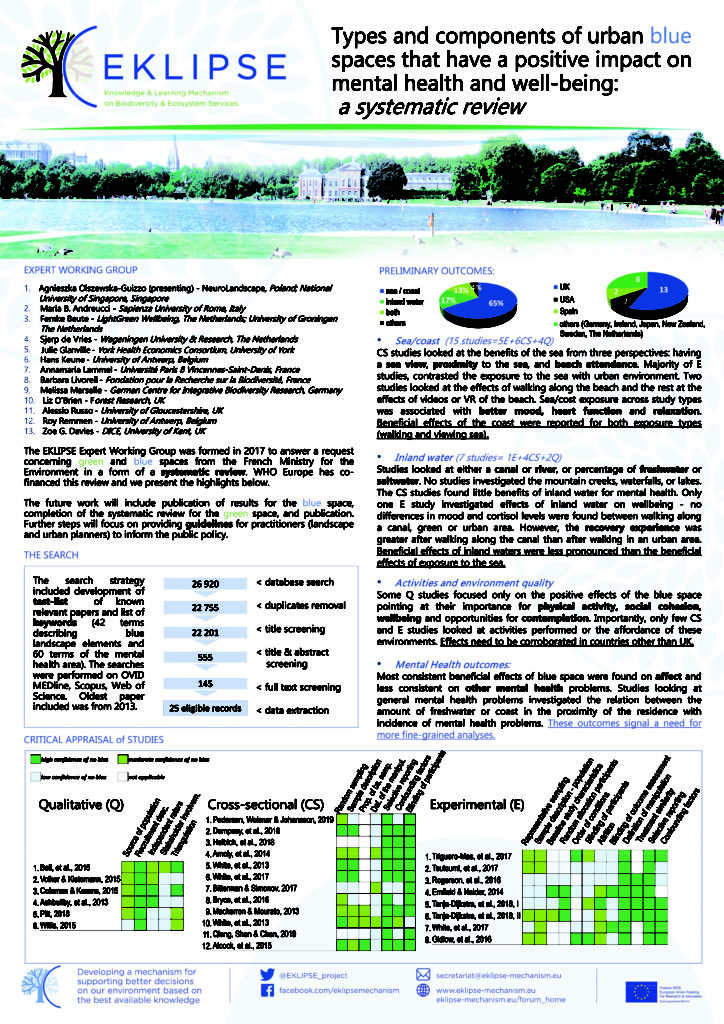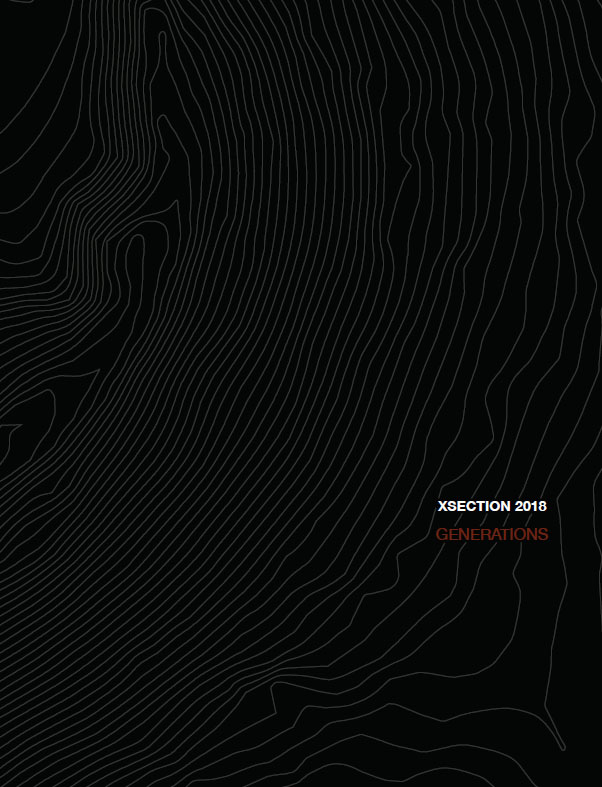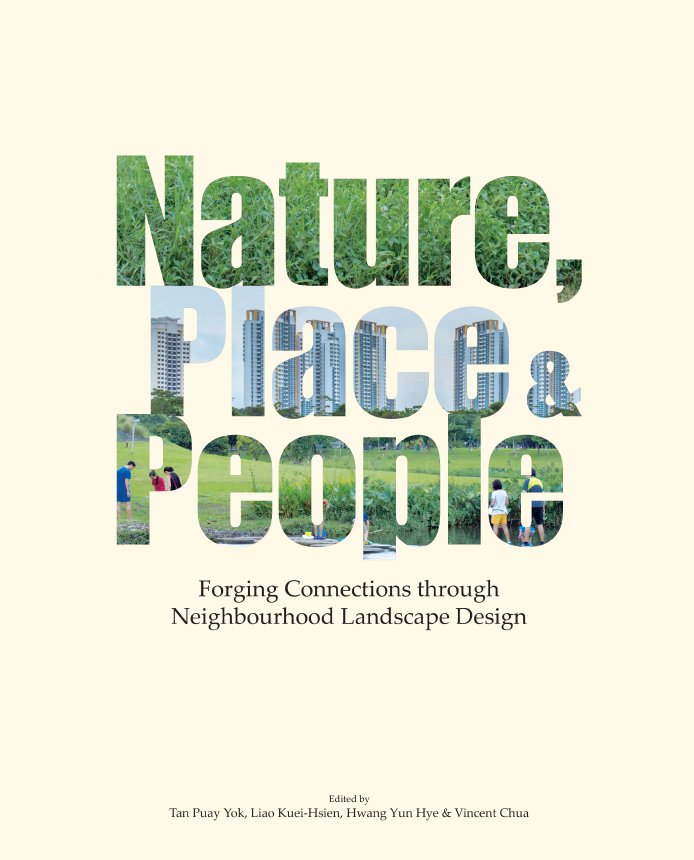2024
Zhang, X., Lin, E. S., Tan, P. Y., Qi, J., Ho, R., Sia, A., ... & Cao, Y. (2024). Beyond just green: Explaining and predicting restorative potential of urban landscapes using panorama-based metrics. Landscape and Urban Planning, 247, 105044.[link]
Zhang, X., Qi, J., Lin, E. S., Tan, P. Y., Ho, R., Sia, A., ... & Olszewska-Guizzo, A. (2024). Towards healthy cities: Modeling restorative potential of urban environments by coupling LiDAR-derived 3D metrics with panorama-based online survey. Environmental Impact Assessment Review, 106, 107497. [link]
2023
Olszewska-Guizzo, A., Sia, A., & Escoffier, N. (2023). Revised Contemplative Landscape Model (CLM): A reliable and valid evaluation tool for mental health-promoting urban green spaces. Urban Forestry & Urban Greening, 86, 128016. [link]
Olszewska-Guizzo A, Russo A, Roberts AC, Kühn S, Marques B, Tawil N and Ho RC (2023) Editorial: Cities and mental health. Front. Psychiatry 14:1263305.[link]
Beute, F., Marselle, M. R., Olszewska‐Guizzo, A., Andreucci, M. B., Lammel, A., Davies, Z. G., ... & de Vries, S. (2023). How do different types and characteristics of green space impact mental health? A scoping review. People and Nature, 5(6), 1839-1876. [link]
Mavros, P., Liang, N. Z., Kirk, S., Te, A., Grübel, J., Melgar, L. A., Olszewska-Guizzo, A., & Makowski, D. (2023). Attenuating subjective crowding through beauty: an online study on the interaction between environment aesthetics, typology and crowdedness. [preprint link]
2022
Olszewska-Guizzo, A., Sia, A., Fogel, A., & Ho, R. (2022). Features of urban green spaces associated with positive emotions, mindfulness, and relaxation. Scientific Reports, 12(1), 20695. [link]
Olszewska-Guizzo, A., Fogel, A., Escoffier, N., Sia, A., Nakazawa, K., Kumagai, A., Ippeita, D., Ho, R. (2022). Therapeutic Garden with Contemplative Features Induces Desirable Changes in Mood and Brain Activity in Depressed Adults. Frontiers in Psychiatry
2021
Olszewska-Guizzo, A., Mukoyama, A., Naganawa, S., Dan, I., Husain, S. F., Ho, C. S., & Ho, R. (2021). Hemodynamic Response to Three Types of Urban Spaces before and after Lockdown during the COVID-19 Pandemic. International Journal of Environmental Research and Public Health, 18(11), 6118.
Olszewska-Guizzo, A., Fogel, A., Escoffier, N., & Ho, R. (2021). Effects of COVID-19-related stay-at-home order on neuropsychophysiological response to urban spaces: Beneficial role of exposure to nature?. Journal of Environmental Psychology, 75, 101590. [link]
2020
Yanru, H.; Masoudi, M.; Chadala, A.; Olszewska-Guizzo, A. Visual Quality Assessment of Urban Scenes with the Contemplative Landscape Model: Evidence from a Compact City Downtown Core. Remote Sens. 2020, 12, 3517.[link]
Kumar, Mitali (2020) Subconscious Landscapes: Impact of the exposure to campus greens on the mental health and well-being of university students. Master of Landscape Architecture dissertation, National University of Singapore. [link]
Olszewska-Guizzo, A., Sia, A., Fogel, A., & Ho, R. (2020). Can Exposure to Certain Urban Green Spaces Trigger Frontal Alpha Asymmetry in the Brain?—Preliminary Findings from a Passive Task EEG Study. International Journal of Environmental Research and Public Health, 17(2), 394. [link]
2019
Andreucci, M. B., Russo, A., & Olszewska-Guizzo, A. (2019). Designing Urban Green Blue Infrastructure for Mental Health and Elderly Wellbeing. Sustainability, 11(22), 6425.[link]
2018
Bil, J., Labuz-Roszak, B., Gorczyca P. (2018) Interactions between neurology and architecture – creating the built environment and its impact on the brain. Archives of Medical Science 10/2018;, DOI:10.5114/aoms.2018.79142 [link]
Olszewska-Guizzo, A.A., Escoffier, N., Chan, J., Tan, P.Y. (2018) Window View and the Brain: Effects of Floor Level and Green Cover on the Alpha and Beta Rhythms in a Passive Exposure EEG Experiment. IJERPH. 15(11), 2358 [link]
Andreucci M. B., Livoreil B., Olszewska-Guizzo A.A., de Vries S., Lammel A., Russo A., O’brien L., Davies Z., Glanville J., Keune H., Marselle M.R., Remmen R., Wood H. (2018) Assessing Relevant Knowledge Related to the Types and Characteristics of Urban Green & Blue Spaces Having a Significant Impact on Human Mental health and Well-being, Healthy landscapes | UNISCAPE International Conference, Bologna, Italy (6-8 June, 2018).
Olszewska, A. A., Marques, P. F., Ryan, R. L., & Barbosa, F. (2018). What makes a landscape contemplative?. Environment and Planning B: Urban Analytics and City Science, 45(1), 7-25.[link]
2016
Olszewska, A. A. Marques, P.F. 2016. Contemplative Greenways Design forthe Health and Well-Being of City Inhabitants, in: Jombach, S, Valánszki, I.,Filep-Kovács, K., Fábos, J. Gy., Ryan, R.L., Lindhult, M.S., Kollányi, L. (Eds.)2016: Greenways and Landscapes in Change – Proceedings of 5th FábosConference on Landscape and Greenway Planning (Budapest, 30 June,2016), pp. 425-432 [link]
Navickas, L., Olszewska, A., & Mantadelis, T. (2016, June). CLASS: Contemplative landscape automated scoring system. In Control and Automation (MED), 2016 24th Mediterranean Conference on (pp. 1180-1185). IEEE. [link]
Olszewska, A. A., Bil, J. S. 2016. Therapeutic garden design for patients with neurodegenerative diseases. Space & Form, (25/1), 259-270. [link]
Bil, J. S. (2016). Stigma and architecture of mental health facilities. The British Journal of Psychiatry, 208(5), 499-500.[link]
2015
Olszewska, A. A., Marques, F. P. & Barbosa, F., (2015) Enhancing Urban Landscapes with Neuroscience Tools. Lessons from the Human Brain, CITYGREEN, Centre for Urban Greenery and Ecology: Singapore, 11, 60 – 65. [link]
2014
Olszewska, A. A., Marques, F. P. & Barbosa, F., (February, 2014) Urban Planning, Neurosciences and Contemplation for improving well-being in our cities, Architectural Research Centers Consortium Journal. [link]
Bil, J. (2014). Evidence Based Design for contemporary healthcare facilities. Space & Form, 22(1), 69-80.
2013
Olszewska, A. A., Marques, P. F., & Barbosa, F. 2013. Landscape Architecture and Neuroscience: The New Meaning of Contemplative Landscapes, International Conference Spaces and Flows – Urban and ExtraUrban Studies , Amsterdam/ Netherlands, 22-23.11.2013
Books and appearances:
"Neuroscience for Designing Green Spaces: Contemplative Landscapes" - a book by NeuroLandscape President, Dr. Agnieszka Olszewska-Guizzo!
Urban parks and gardens are where people go to reconnect with nature and destress. But do they all provide the same benefits or are some better than others? What specific attributes set some green spaces apart? Can we objectively measure their impact on mental health and well-being? If so, how do we use this evidence to guide the design of mentally healthy cities?
The Contemplative Landscape Model unveils the path to answer these questions. Rooted in landscape architecture and neuroscience, this innovative concept is described for the first time in an extended format, offering a deep dive into contemplative design and the science behind it. In the face of the global mental health crisis, and increasing disconnection from nature, design strategies for creating healthier urban environments are what our cities so sorely need.
This book delves into the neuroscience behind contemplative landscapes, their key spatial characteristics, and practical applications of the Contemplative Landscape Model through case studies from around the world. Landscape architects, urban planners, students, land managers, and anyone interested in unlocking the healing power of landscapes will find inspiration here.
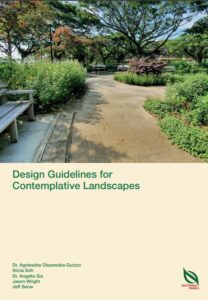
This publication is a joint effort between National Parks Board in Singapore and Dr. Agnieszka Olszewska-Guizzo from NeuroLandscape. It is a translation of research findings from the study Effects of Landscapes on Brain Activity into design application. The information aims to help landscape professionals design and implement landscapes that enhance mental well-being, for a more liveable Singapore. The full text can be found here.
Booklet from the Floriade Expo 2022 Green Exchange Challenge, Almere, NL. During the event, Dr Agnieszka Olszewska-Guizzo gave a masterclass lecture to contestants "Neuroscience-based design for mentally healthy, green cities". Full text can be found here
"Miasta Praw Człowieka. Inspiracje, dobre praktyki, narzędzia" Publikacja przedstawia podstawy prawne i metodologię podejścia koncepcji Miast praw człowieka. Odzwierciedlone są w niej przede wszystkim praca i doświadczenia polskich samorządów w ich „ulokalnianiu”. Trzon opracowania stanowi opis dobrych praktyk i wyzwań, z jakimi mierzą lub mierzyły się samorządy lokalne. Jest to zatem niezwykle cenny zbiór inspiracji i rozwiązań wdrażanych w polskich miastach. | Read more here...

Springer Nature Collection presents interdisciplinary outputs on sustainable policies and practices via case studies. It provides research outputs highlighting the interdependence among energy, environment, and health issues. NeuroLandscape team contributed a chapter Sustainable Solutions in Urban Health: Transdisciplinary Directions in Urban Planning for Global Public Health by Agnieszka Olszewska-Guizzo, Anna Fogel, Diana Benjumea, Nazwa Tahsin.
Green and blue spaces and mental health: new evidence and perspectives for action (2021). This WHO report summarizes the key findings of the systematic reviews by EKLIPSE, with NeuroLandscape contribution, briefly looks at the relevant WHO tools and strategies, and reflects on future needs for research and action. Full text available [here].

Types and characteristics of urban and peri-urban green spaces having an impact on human mental health and wellbeing: A systematic review. A report developed under an EU and WHO funded project 2018-2020. Full text [here].
 Types and characteristics of urban and peri-urban blue spaces having an impact on human mental health and wellbeing: A systematic review. A report developed under an EU and WHO funded project 2018-2020. Full text [here].
Types and characteristics of urban and peri-urban blue spaces having an impact on human mental health and wellbeing: A systematic review. A report developed under an EU and WHO funded project 2018-2020. Full text [here].
A collection of policy briefs produced from research presented at the 16th Conference on Urban Health in Xiamen, China, November 4–8, 2019, under the theme People Oriented Urbanisation: Transforming Cities for Health and Well-Being. It inludes two articles from the NeuroLandscape team, read more here. Exclusive access to the full book here.
BBC World Service Series "My Perfect City - Mental Health in Singapore", featuring NeuroLandscape and Dr Agnieszka Olszewska-Guizzo. Talking about science-based solutions of improving mental health of Singaporeans through the urban greening strategies. Released on 30th December 2020
"Honorary Mention in Urban Health" Award winning poster presented at a 16th International Conference of Urban Health that took place between 5th and 8th November 2019 in Xiamen, China titled: "Effects of passive exposure to green urban landscape on the brain: preliminary results". It presents the preliminary findings related to the frontal alpha asymmetry (FAA) occuring in the brain of participants exposed to the therapeutic garden with high contemplative scores; lower FAA pattern in other green spaces and reverse Faa pattern in the generic urban street environment. These are preliminary results from 22 participants. Further data collection is still ongoing
Poster presented at a 16th International Conference of Urban Health that took place between 5th and 8th November 2019 in Xiamen, China. The poster presents the findings of the EKLIPSE Expert Working Group on Which types of urban and suburban blue spaces and which characteristics of such spaces have a significant impact on human mental health and well-being. It describes all steps undertaken by EEWG and discuss the most important outcomes of our work. Ways to promote the mental health and well-being of people living in urban areas will be discussed, along with information on how nature-based solutions can be used to successfully address the challenges facing an ever-urbanizing world.
XSection is a cross between a journal and a book - with a goal to capture the space between practice, research, and popular interest so that ideas in Landscape Architecture become more accessible to practice and the public. XSection 2018: Special Edition Generations features creative work, projects, and articles from engaged with the opportunities and challenges of our future environments - and the ongoing changes faced by each successive generation.
NeuroLandscape has contributed one chapter "Generations of Urban Green for Health", which can be found under this link.
This is the book published as an output from "Biophilic Town Framework" project carried out at the National University of Singapore and lead by Prof Tan Puay Yok. Dr Agnieszka Olszewska-Guizzo contributed to the book with some remarks considering the design for health and wellbeing in the high-density urban contexts, namely to the chapters "Sense of Place" and "Aesthetic Values".
Nature, Place & People Forging Connections through Neighbourhood Landscape Design (eds: Tan, P.Y., Hwang Y.H, Liao, K.H.& Chua V.) World Scientific, Singapore. [link to full book]







